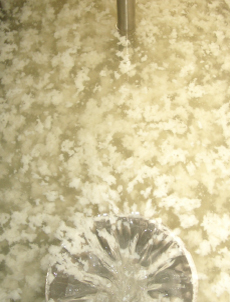How DAF systems work
Trade effluents, generated in the food industry, very often contain relatively large concentrations of fats, oils and greases, referred to as FOG’s.These FOG’s are nearly always in emulsified form because they have been generated during a wash-down cycle where detergents are used.
The DAF process takes a chemical that contains an ion of opposite charge to those maintaining the stability of the emulsion, such as a ferric or an aluminium salt and adds this to the emulsion. The tiny electrostatic force that keeps the emulsion stable is broken and the fats released bond with the ferric or aluminium, along with other impurities.
The result will be visually clear water and tiny, discreet particles of FOG and dirt known as a ‘pin-floc’. This pin-floc can be bound together to form larger particles adding a ‘glue’ known as a polyelectrolyte or poly for short. The resulting larger particles are known as a ‘floc’ because of their appearance.
This resulting ‘floc’ can now be separated from the water using the Dissolved Air Flotation (DAF) process.
FIND OUT MOREMAKE AN ENQUIRY

Our bespoke waste water
systems & established
proven technologies mean
we can cater for all areas of
the food processing industry.
Our bespoke waste water systems & established proven technologies mean we can cater for all areas of the food processing industry.
